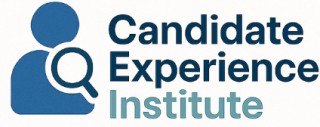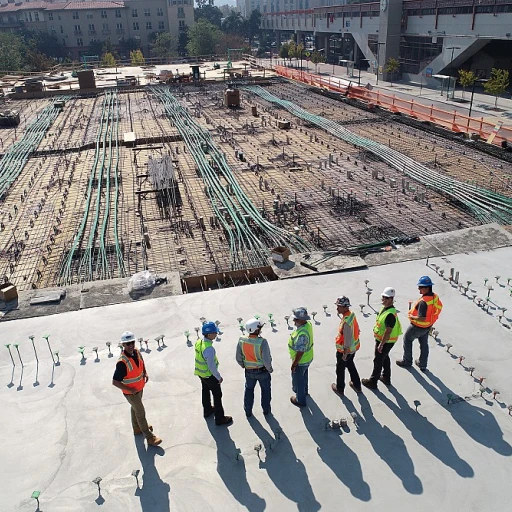
Understanding Candidate Experience
Decoding the Candidate Experience
The candidate experience is a critical aspect of the recruitment process that can significantly influence a job seeker's perception of a company. It encompasses every interaction a candidate has with a potential employer, from the initial job search to the final hiring decision. Understanding this journey is essential for organizations aiming to attract top talent and build a positive reputation in the job market.
In today's competitive landscape, candidates are not just evaluating job offers based on salary and benefits. They are also considering the overall experience they have during the recruitment process. This includes how they are treated, the transparency of the process, and the communication they receive. A positive candidate experience can lead to a stronger talent community and enhance the company's brand image.
Organizations should focus on creating a seamless and engaging experience for candidates. This involves several key elements:
- Communication: Clear and timely communication is vital. Candidates appreciate knowing where they stand in the process and what to expect next. This can be achieved through regular updates and feedback mechanisms.
- Technology: Leveraging technology can streamline the application process, making it more efficient and user-friendly. This includes using platforms that support easy application submissions and tracking.
- Personalization: Tailoring the recruitment process to meet the needs and preferences of candidates can make them feel valued and respected. This can involve personalized communication and customized job recommendations.
By focusing on these elements, companies can enhance the candidate experience and reduce application drop-off rates. For more insights on minimizing drop-off rates, you can explore this resource.
Ultimately, a positive candidate experience not only attracts top talent but also fosters a sense of community and belonging among potential employees. It is a crucial component of a successful recruitment strategy that aligns with the organization's values and goals.
The Role of Communication in Candidate Experience
Effective Communication: The Backbone of Candidate Experience
In the realm of job applications, communication is a critical component that can significantly influence a candidate's perception of an organization. Whether you're applying for an internship, a full-time position, or joining a talent community, the way a company communicates throughout the recruitment process can make or break the candidate experience.
Clear and timely communication helps candidates feel valued and informed, reducing anxiety and uncertainty. Here are some key aspects to consider:
- Transparency: Clearly outline the steps involved in the recruitment process. This includes providing a timeline for when candidates can expect to hear back after submitting their applications. Transparency builds trust and sets realistic expectations.
- Consistency: Ensure that communication is consistent across all departments, whether it's the executive office, administrative support, or the health care division. Consistent messaging helps maintain a cohesive brand image and prevents confusion.
- Personalization: Tailor communication to the individual candidate's journey. Use their name and reference specific details about their application or skills. Personalization shows that the organization values each candidate's unique contributions.
- Feedback: Provide constructive feedback to candidates, even if they are not selected for the role. This not only helps them improve their skills but also leaves a positive impression of the company. Feedback mechanisms are a two-way street, fostering a culture of continuous improvement.
Incorporating these elements into your communication strategy can enhance the overall candidate experience. For more insights on minimizing application drop-off rates, explore this resource.
Leveraging Technology for a Better Candidate Experience
Integrating Technological Solutions
In today's digital age, technology has become a critical component in enhancing candidate experience during job applications. With the proliferation of online platforms and tools, organizations have ample opportunities to streamline their processes and improve interactions with job seekers. One area where technology can make a significant impact is the initial stages of the job search. Online job boards and company websites are often the first point of contact for applicants. To ensure a positive experience, companies should optimize their job listing pages to be user-friendly and informative. Including features such as "view jobs" and "join talent community" options can help candidates easily navigate through available positions, whether full-time, part-time, or internship opportunities, across various departments, such as health care, business, or administrative roles. Moreover, using automated systems for resume parsing and applicant tracking can greatly reduce the time and effort required to manage a large volume of job applications. This not only enhances efficiency but also supports a smoother job search process for candidates. However, it's vital that these systems comply with privacy policy standards to protect candidates' personal information.Communication and Interaction
Technology facilitates dynamic and efficient communication between recruiters and candidates. Implementing chatbots or virtual assistants can provide instant responses to common queries, offering real-time support and guidance throughout the application process. For more personalized interactions, leveraging AI-driven tools can help tailor communication based on the candidate’s skills and preferences. By marrying technology with effective communication skills, recruiters can foster a supportive and engaging recruiting environment. This digital interaction should, however, be complemented with human touchpoints to preserve the personal aspect of the hiring process. As technology continues to evolve, balancing automation with personalization is key to an inclusive candidate experience. For further insights on how technology plays a vital role in managing multiple interests such as navigating I-9 verification while managing multiple jobs, explore more here.Feedback Mechanisms: A Two-Way Street
Creating a Productive Feedback Loop
In the realm of job applications and recruitment, feedback plays a crucial role. It's more than just informing candidates whether they've secured the job or not; it's about fostering a two-way communication channel that benefits both parties. Feedback mechanisms serve as a vital component of candidate experience, offering insights and a chance for candidates to enhance their skills and understand the job market better.
When candidates apply for jobs or internships within any organization—be it a global giant or a small health care provider—clear and constructive feedback can immensely improve the perceived support and integrity of that organization. This approach helps build a trustworthy community where candidates feel valued and heard.
Responsiveness and Clarity
Incorporating feedback into the application process begins with a responsive and transparent administrative system. The executive office and department education sectors, among others, should strive to craft responses that are not just prompt but also transparent. Whether the feedback is positive, offering praise for a candidate's communication skills, or constructive, suggesting areas of improvement, the clarity of message will significantly influence the candidate's experience. This perspective aligns with the views expressed in the job application journey enhancement discussions.
Two-Way Interaction
Feedback should not be a one-sided communication. Organizations should encourage candidates to provide their insights on the recruitment process. This feedback can offer valuable data for improving the services and policies related to recruitment. For instance, questions about the work environment, privacy policy, or the ease of using the job search and application platform can uncover pain points and areas for potential development.
Incorporating the candidate's voice ensures ongoing improvements, making it easier for future applicants to navigate opportunities ranging from administrative roles to full-time positions in major gifts or the American ballet theatre. This collaborative approach ultimately enriches the candidate experience and enhances the talent community as a whole.
In conclusion, effective feedback mechanisms, when implemented thoughtfully, not only provide candidates with a sense of inclusion and growth but also contribute to a better, more refined recruitment process. It's a two-way street where both parties learn, improve, and succeed together.
Personalization in the Recruitment Process
Creating a Personalized Approach in Recruitment
In the competitive landscape of job applications, distinguishing oneself is not only essential for candidates but also for organizations. Personalization in the recruitment process can play a pivotal role in achieving this. By tailoring interactions and communications to the individual candidate, companies demonstrate a commitment to an inclusive and engaging candidate experience. To do this, organizations can employ several strategies:- Know the Candidate: Utilize data from the candidate's resume and application form to tailor communications. For instance, applicants with a background in health care might be interested in learning abt specific opportunities in related departments. This approach not only respects the candidate's unique experience but also aligns with their interests.
- Targeted Communication: Instead of sending generic messages, job offers or updates about an abt global internship program can be tailored to the candidate's career stage, such as internship applicants or those seeking full-time positions.
- Leverage Technology: Automated tools can aid recruiters in sending personalized emails or messages to candidates without extensive manual intervention. These tools can integrate with platforms like Microsoft Word to ensure seamless communication, reflecting a professional tone and accuracy.
- Create a Talent Community: Encourage candidates to join talent communities where they can engage with the organization on a more personal level. This community can provide valuable insights into the work environment, department education initiatives, and executive office policies.
Measuring and Improving Candidate Experience
Evaluating and Elevating the Candidate Journey
Measuring the candidate experience is an essential step in ensuring the recruitment process is as effective and pleasant as possible. By understanding how candidates perceive their journey from job search to job offer, organizations can identify areas for improvement. Here's how you can forge a stronger, more positive candidate experience:- Implement Surveys and Feedback Forms: Utilizing surveys at different stages, from initial application through to interview processes, gives essential insights into candidate satisfaction. Feedback is a valuable tool for monitoring aspects like your communication skills, the efficiency of the recruitment process, and overall candidate impressions.
- Monitor Key Metrics: Examining specific analytics such as application completion rates, dropout statistics, and offer acceptance rates will help illuminate issues in the candidate experience. Such data can highlight pain points like where candidates might abandon the job search due to challenges in your health care initiatives or administrative delays.
- Benchmark Against Industry Standards: Comparing your candidate experience metrics against industry standards or competitors can expose areas where your organization may need to adapt or evolve strategies. Departments such as human resources or the executive office using platforms like Microsoft Word may need dedicated support to align with global expectations.
- Collect Qualitative Feedback: Encouraging open dialogue through interviews or focus groups can provide depth to quantitative data, revealing nuances and emotions not captured in structured forms. This process aligns with community programs or educational initiatives within your organization.
- Leverage Talent Community Insights: Engaging with your talent community allows your department to gather ongoing feedback and maintain a pool of potential applicants for future openings. By learning about the expectations and experiences of past and current candidates, your business can foster a nurturing work environment.












